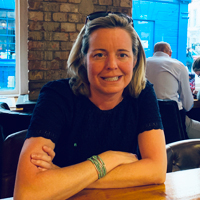Thinking about moving to Sai Kung? Below we highlight some of the pros and cons of living in Sai Kung.
Located on the eastern side of Hong Kong’s New Territories, Sai Kung is a district that offers a unique blend of urban and rural living. Known for its stunning natural beauty, vibrant nightlife, and rich cultural heritage, Sai Kung is a place that has something for everyone. However, like any place, living in Sai Kung has its pros and cons. In this article, we will delve into the advantages and disadvantages of residing in this fascinating district.
Pros of Living in Sai Kung
One of the most significant advantages of living in Sai Kung is its natural beauty. The district is home to some of Hong Kong’s most beautiful beaches, hiking trails, and country parks. For instance, the Sai Kung East Country Park is a haven for nature lovers, offering breathtaking views of the South China Sea and a plethora of outdoor activities such as hiking, camping, and bird watching.
Another advantage of living in Sai Kung is its vibrant food scene. The district is renowned for its seafood restaurants, many of which are located along the waterfront. These restaurants offer a wide variety of seafood dishes, from traditional Cantonese-style steamed fish to exotic delicacies like sea urchin and abalone. In addition to seafood, Sai Kung also boasts a diverse range of international cuisines, including Italian, French, and Japanese.
Sai Kung is also known for its rich cultural heritage. The district is home to several historical sites, such as the Tin Hau Temple, which is dedicated to the Goddess of the Sea, and the Sai Kung Outdoor Recreation Centre, which offers a glimpse into Hong Kong’s colonial past. Furthermore, Sai Kung hosts a variety of cultural events throughout the year, including the Dragon Boat Festival and the Mid-Autumn Festival, providing residents with ample opportunities to immerse themselves in local traditions and customs.
Lastly, Sai Kung offers a sense of community that is often lacking in more urban areas of Hong Kong. The district has a tight-knit community, with many local organizations and clubs that residents can join. For example, the Sai Kung District Community Centre offers a range of activities and services for residents of all ages, from sports clubs to volunteer opportunities. Similarly, the Sai Kung Rural Committee is actively involved in local affairs, providing a platform for residents to voice their concerns and contribute to the community.
Cons of Living in Sai Kung, Hong Kong
Despite its many advantages, living in Sai Kung also has its drawbacks. One of the main disadvantages is its relative remoteness. While this can be a plus for those seeking peace and tranquility, it can also be a hindrance for those who need to commute to the city center for work or school. Public transportation in Sai Kung is limited, and the journey to central Hong Kong can take up to an hour or more during peak hours.
Another disadvantage of living in Sai Kung is the cost of living. While it is generally cheaper than living in central Hong Kong, the cost of housing, food, and other necessities can still be quite high. For instance, the price of seafood in Sai Kung, while fresh and high-quality, is often higher than in other parts of Hong Kong. Similarly, housing prices in Sai Kung have been on the rise in recent years, making it increasingly difficult for middle-income families to afford a home in the district.
The limited availability of amenities is another drawback of living in Sai Kung. While the district has a decent selection of restaurants and shops, it lacks the variety and convenience of more urban areas. For example, there are only a few supermarkets in Sai Kung, and they often have a limited selection of products compared to those in central Hong Kong. Similarly, while Sai Kung has a number of schools, they are often oversubscribed, making it difficult for new residents to secure a place for their children.
Lastly, while Sai Kung’s natural beauty is one of its main attractions, it also brings with it a host of environmental issues. The district’s beaches and country parks are often littered with trash, particularly during the summer months when they are frequented by tourists. Furthermore, Sai Kung’s rural location means that it is more susceptible to natural disasters such as typhoons and landslides, which can cause significant damage to homes and infrastructure.


